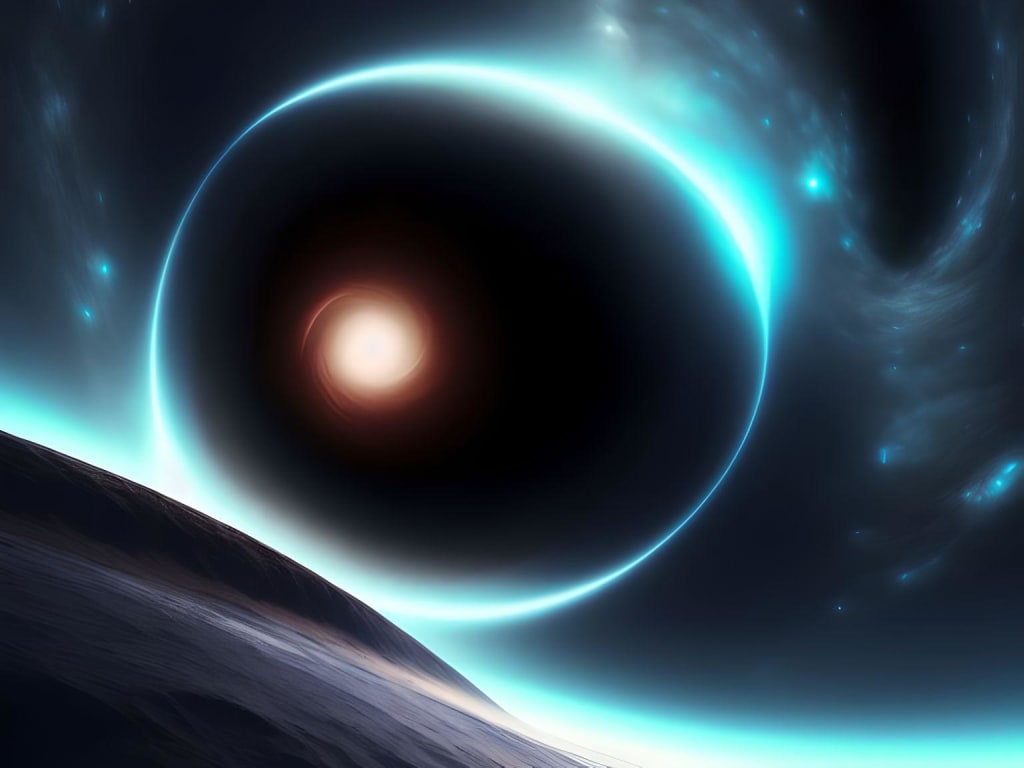
Black holes, mysterious entities with an insatiable appetite for matter and energy, have long intrigued scientists and enthusiasts alike. But what if we dared to push the boundaries of physics and attempted to destroy these cosmic giants? In this exploration, we delve into the hypothetical scenario of annihilating a black hole and the mind-bending consequences it might unleash.
1. Nuke It Big: The Power of Explosions
To initiate our cosmic experiment, let's imagine creating a tiny black hole in the lab, equivalent in mass to our moon. Setting the stage for destruction, we detonate the world's entire nuclear arsenal around our minuscule black hole. Surprisingly, instead of diminishing, the black hole grows more massive with each explosive burst, showcasing the inherent link between energy and mass as dictated by Einstein's equation, E = mc².
2. Antimatter Assault: A Futile Attempt
In our quest to dismantle the black hole, we turn to antimatter, hoping its annihilation properties could be the key. Unfortunately, black holes, indifferent to the nature of incoming matter, erase the past identity of anything that crosses their event horizon. Whether composed of matter or antimatter, the black hole simply absorbs and increases in mass, demonstrating an intriguing similarity to elementary particles in their simplicity.
3. Anti Black Hole Collision: A Failed Encounter
Considering the existence of antimatter counterparts, we ponder the collision of a black hole with its antithesis, an anti black hole. Disappointingly, the opposing charges cancel each other out, resulting in a larger, charge-neutral black hole. This failure leads us to question whether a more significant endeavor is required to dismantle these cosmic entities.
4. Destroying the Event Horizon: A Radical Approach
Delving into the peculiar characteristics of black holes, we explore the notion of destroying the event horizon. The event horizon, the outer edge of a black hole, encapsulates the singularity within – an infinitely compressed mass with gravity so potent that nothing escapes, not even light. If we were to overcharge or over-spin a black hole, there is a theoretical possibility of dissolving the event horizon and freeing the singularity.
5. Overfeeding: A Controversial Strategy
Overfeeding the black hole involves pushing its spin or charge beyond certain limits, causing the event horizon to vanish. Yet, physicists engage in passionate debates over the feasibility of such an approach. The intricate dance of charge and spin reaches a point where the electrostatic repulsion or the rotational forces prevent further overfeeding, challenging the practicality of this ambitious plan.
6. Breaking Physics: The Dilemma of Naked Singularities
Attempting to destroy the event horizon, we face a potential consequence – the creation of a naked singularity. Unlike the concealed singularity within a black hole, a naked singularity would be visible and could disrupt the fundamental laws of physics. Predictability, causality, and the fabric of spacetime might unravel, leading scientists to question whether such an act could jeopardize the very essence of our understanding of the universe.
7. The Safe Option: Hawking Radiation
As we contemplate the risks and uncertainties of dismantling black holes, the safest approach emerges – patience. Hawking radiation, a phenomenon predicted by physicist Stephen Hawking, causes black holes to emit tiny particles and slowly lose mass. This gradual evaporation, an exceedingly lengthy process, offers a non-disruptive method for the eventual demise of black holes without the catastrophic consequences of other proposed strategies.
In the cosmic symphony of black holes, the question of their destruction unravels a tapestry of complexities, pushing the boundaries of theoretical physics. While ambitious endeavors may tempt us to challenge these cosmic enigmas, the safe option, as dictated by Hawking radiation, reminds us that patience could be the key to witnessing the natural demise of these celestial giants. As we peer into the vastness of the universe, the mysteries of black holes persist, inviting further exploration and contemplation.
About the Creator
Kei Ben
A fresh read goes a long way.






Comments
Kei Ben is not accepting comments at the moment
Want to show your support? Send them a one-off tip.